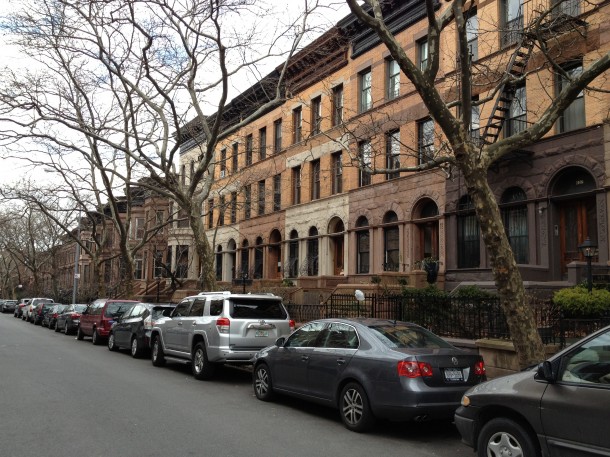
By Zoe Jewell
Fast talking, affable and no-nonsense – Gersh Kuntzman is just what I imagine a Brooklyn news reporter to be. He is the deputy news editor at the New York Daily News and has taken me to a chi-chi cafe in Windsor Terrace to talk about (and show me) the changing faces of his home town. He has lived in and reported from Brooklyn for over 20 years.
Gersh starts with a potted history of Brooklyn, its own city until 1898 when it merged with Manhattan into the City of New York. Brooklyn, he says, was more populous but “always the second city”. While companies had their factories in Brooklyn, they had their head offices in Manhattan. So it was the home of blue collar workers, most of whom were white and unionised, earning a respectable wage at the navy yards, pencil-making factories or sugar factories. The Brooklyn Navy Yard was one of the biggest in the country until the 1960s, building huge numbers of ships and related products during the two world wars.
In the 1960s and 1970s, Brooklyn changed forever. Its manufacturing industry was decimated, factories were decommissioned and hundreds of thousands of jobs have since disappeared, killed by the twin threats of mechanisation and cheap overseas labour. “So the workers left”, says Gersh, “and Brooklyn was left with emptiness – huge abandoned areas in the 1970s and 1980s. After the middle class had left, only the poor were left. Brooklyn had never had an elite.”
Suddenly empty places were available and – a classic story of gentrification of course – as prices skyrocketed in Manhattan, artists and people like Gersh began to move to huge brownstone houses in the 1980s and renovate them. “The Brownstoners” as they were called, were helped out by government incentives offering loans to renovate and cheap mortgages. For Gersh, they are the people who recreated the neighbourhood, opened restaurants, concert halls and arts centres. And he sees a revival of Brooklyn’s manufacturing history in the large number of artisan makers and niche factories in the area. “It’s the hipster movement, reinventing craft on a high end level, instead of on a mass level like the companies used to do. Brooklyn has its own civic identity again.”
Of course, not everyone would agree that the gentrificiation of the area is so positive – housing shortages for those on low income remain a huge problem and rent rises have of course pushed some people out. The community activist Celia Maniero Cacace is the most recent and high profile victim of that trend.
Gersh insists that “the only constant in New York life is change. We call it gentrification now, but it has been happening since the Dutch moved here. I love change. If you want to live in a city with no change, live in Amsterdam. New York is constantly reinventing itself.” As in Brixton, then, the gentrifcation debate is frought with difficulties, tensions, and competing claims to the city. “A lot of old Brooklyinites feel ownership. There’s a lot of ‘this is my Brooklyn, this is not my Brooklyn.'”
Next stop for me is Fort Greene, a neighbourhood that was majority African American until 2010. Here’s a useful article explaining some of the reasons why. I’ll be speaking to Deb Howard, who runs the Pratt Area Community Council, about what they have been doing to manage gentrification and provide opportunities for affordable housing in the area.




Really good article, change being the only constant is a great quote but of course it shouldn’t be used as an excuse to not support those already living in the area. Change is great but it’s far better to come from within than externally.
Interesting
It’s a good point he makes about gentrification really being just ‘change’.